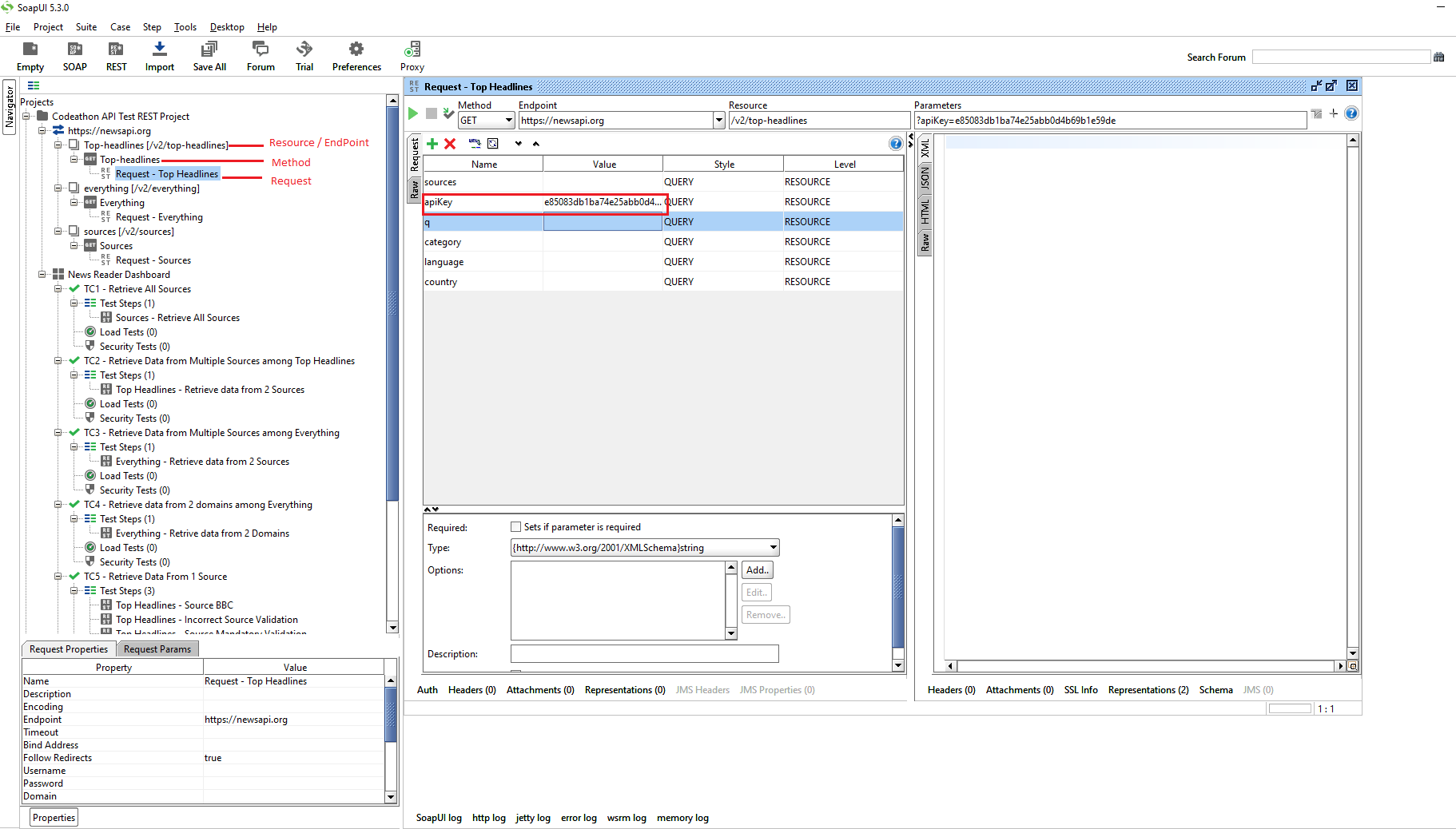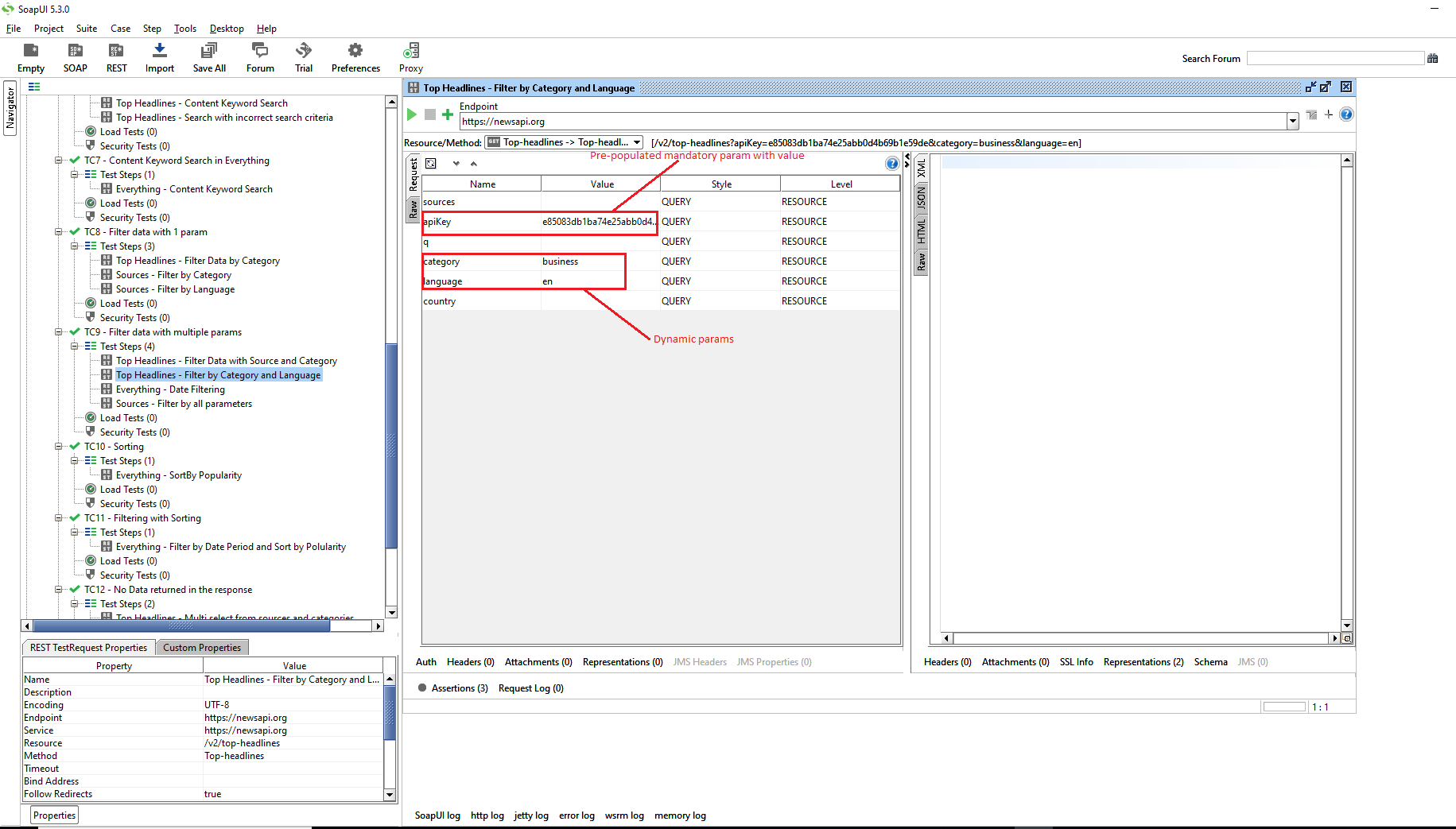Parameterization in SoapUI
By Piyumi DissanayakeThere are many ways of handling parameters in SoapUI API Tests. This article is based on how to handle Project wide global variables for REST requests, when it comes to API Testing using SoapUI tool.
Following is a step-by-step guide on how to add Request Level parameters which can be used by the test cases inside of the project for a simple HTTP REST API. This API needs an API key to use the API - this is a unique key that identifies your requests.
Therefore, the Authentication is handled with an API key.
There are three ways of attaching the API key to a request described as follows.
-
Via the ApiKey query string parameter.
-
Via the X-Api-Key HTTP header.
-
Via the Authorization HTTP header.
Therefore, this API Key is one of the mandatory parameters for the API test we are going to write, since it must be used in each and every request within the API.
In that case, it is recommended to use the API Key as a global Parameter for the whole project. Because that approach allows us to reuse it in all the test cases, we are going to write.
When you are creating the REST Project, You can add REST Requests for each and Every Endpoint in your API. For each of those Requests to can define what are the parameters involved as shown in the following image.
If you have a parameter that has a unique value which should be reused in all your test cases you can populate the Value field of the query string parameter with that value so that it will get pre-populated in each and every test case within the project. In addition, if you have parameters, which should be dynamically populated at the test case Level, you should leave those parameters Empty.
When you are creating the test cases, you simply have to choose what Resource/ Endpoint you are using for the specific test case. Then it will populate all the parameters and values involved. If you need to change any Parameter value, you can do that as well.
By following this approach, parameters can be easily reused within the project and will save time spent on defining parameters at the test step level as well.



